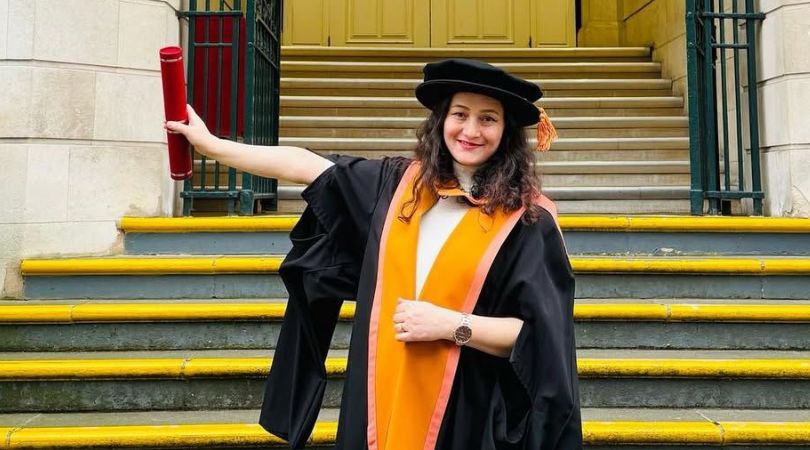This article discusses the importance of Fatehpur Sikri as a center of Mughal culture.
Introduction of Fatehpur Sikri
Fatehpur Sikri, located in the Agra district in modern-day India, was the Mughal king, Jalaluddin Akbar’s headquarters, from 1571 to 1585. Until Akbar founded it as his capital, it was a village with the name of Sikri. The purpose behind making it his capital was its strategic position. From here Akbar launched his successful military campaigns into Gujarat to make it part of the Mughal empire. Akbar named the village Fatehpur Sikri, which means the place of victory, to commemorate his victories in battles launched against the sultans of Gujarat in 1573.
Akbar’s son and the later Mughal king, Jahangir, was born at Sikri in 1569. Moreover, the Khanqah of Shaikh Salim Chisti, who had predicted the birth of Jahangir, existed at Sikri before Akbar founded it as his capital. The city remained as the Mughal capital for period 12 years until Akbar led invasions into Punjab. Akbar visited Fatehpur Sikri at different times he abandoned it completely in 1610.
Fatehpur Sikri emerged as a center of the world’s most unique royal art and architecture, syncretic in nature, and as a precious cultural heritage of India and the world today.
The city fell under the control of the British after their occupation of Agra in 1803. For the next 47 years, they used the city as an administrative center. The city gave a deserted look before the British. However, in 1815, they repaired the Mughal historical monuments at Fatehpur Sikri.
Architectural monuments built at Fateh Sikri under Akbar
Architecture is one of the examples of culture. In this article, we will discuss the importance of Fatehpur Sikri as a center of Mughal culture from an architectural point of view.
The following are the architectural monuments that Akbar commissioned from 1573 to 1585 during his stay:
1. Buland Darwaza
Buland Darwaza is a 55 meters high 15 storied entrance to Jama Masjid from the south at Fatehpur Sikri. Akbar started its construction in 1576 in commemoration of the victory in his Gujarat campaigns launched in 1573. The construction was completed in 1577 in a period of one year.
Important Features of Buland Darwaza
The following are some of the important features of this monumental structure:
- It is made of red sandstone with the decoration of both white and black marble.
- the is symmetrical in design containing large-sized domed Chhatris on the top. There are13 domed kiosks to the front of the large domed chhatris. But they are smaller in size and located at the edge of the gallery.
- the monument contains inlay work with white and black marble throughout.
- the structure is surrounded by smaller minarets at the corners and contains arched niches.
- there is the main arch standing topped by a dome in the center of three projecting sides. Moreover, the arch is broken into three tiers with rows of smaller arches and flat brackets.
- Inscriptions showing different styles of Arabic calligraphy characterize the facade of the structure.
2. Jama Masjid
Jama Masjid is a congregational mosque built in a period of one year in 1572 on the orders of Akbar at Fatehpur Sikri. It was the first building to be constructed in the city.
Main features of the Jama Masjid
- The Buland Darwaza, the large-sized entrance was added to the mosque in 1577 in commemoration of his successful Gujarat campaigns.
- The mosque carries Indian architectural styles of mosques containing iwans surround a central courtyard.
- It carries a row of Chhatris over the sanctuary.
- The structure also contains seven bays each containing three mihrabs.
- The central mihrab covered by a dome displays inlay decoration and geometric work is covered by a dome
3. Diwan-e-Khas
Diwan-e-Khas was the building where the emperor Akbar used to have private audiences. The emperor also used to meet people of different religions. Discussion related to religion and faith used to take place.
Main features of Diwan-e-Khas
- Diwan-e-Khas is a double-storied plain square building with four Chhatries (pillared verandas) rising on each corner of a flat terraced roof.
- The interior of the building contains a single chamber with a large central ornate pillar with a circular stone platform for the emperor’s seating.
- Stone bridges or stone walkways emanate from the central platform towards each corner of the structure.
- With a square base and octagonal shape, the pillar carries bands of both geometric and floral designs.
3. Diwan-e-Aam
Diwan e am is another architectural monument with a public hall where the emperor used to meet his subjects. He used to appear at the hall every morning, listen to the complaints of the common people, and issue orders to resolve the raised issues. This was a spacious complex that accommodated a large number of people at a time.
Main Features of Diwan-e-Aam
- The structure contains a colonnaded dalan divided into more than 100 bays made of square pillars.
- An important and impressive part of the building is the Throne Chamber facing east with a roof made of stone and carved ornamentation.
- consists of three parts, (a) front space for public (b) center with a seat for the emperor surrounded by stone screens (c) the portion masked by elegantly made jali (screen) for royal females.
- Contains pillars, brackets, and kiosks at regular intervals in a masterly composition.
4. Tomb of Salim Chisti
Akbar commissioned the construction of the Tomb of Sufi Saint, Shaikh Saim Chisti (1478 -1572) by 1580 -81. The saint who foretold the birth of the future emperor, Jahangir, was greatly revered by emperor Akbar. The emperor also named his newborn son Prince Salim as a sign of respect for the saint, Shaikh Salim Chisti.
Main features of Tomb of Shaikh Salim Chisti
- It is a single-story building surrounding a square chamber at the center
- Within the central square chamber locates the grave of the saint.
- A wooden canopy ornate with a nacre (mother-of-pearl) mosaic.
- The tomb is surrounded by a passageway for the visitors to perform circumambulation;
- The interior is also characterized by stone pierced screens, carved jalis, and intricate geometric designs.
5. Ibadat Khana
Ibadat Khana at Fatehpur Sikri holds an important position when it comes to Akbar’s religious approach and activities in connection with his new religious order, Din Ilahi. Known as the House of worship, the building was a meeting house built in 1575. According to historical accounts, this building of Ibadat Khana was where Akbar laid the foundation of a new faith, Din-e-Ilahi.
6. Anup Talab
Built by Raja Anup Singh Sikarwar, Anup Talao is a pool of unique designs at Fatehpur Sikri. The pool is marked by elaborate rhetoric having a platform at the center accessed through 4 bridges. Moreover, the pool is surrounded by important buildings from a distance. i.e. Diwan-e-Khas, Khwabgah, Panch Mahal, Ankh Michauli, etc.
7. Marium-uz-Zammani Palace
This is a building made for Akbar’s Rajput wife Mariam-uz-Zamani. Akbar’s other Rajput wives lived in the palace.
Built around a courtyard, the palace carries Gujarati architectural style. The design of the structure depicts the special care taken to ensure the privacy of royal women.
8. Naubat Khana
Nabat Khan means the musician place in Persian. At Fatehpur Sikri, Naubat Khana acted as the place for the announcement of the arrival of the emperor. The court musicians made the announcement by use of drums. The structure acted as the main entrance for the emperor.
9. Pachisi Court
Pachisi Court is the courtyard in front of the Panch Mahal. Made with red sandstones, the courtyard measures 66.29 by 46.93 meters.
10. Panch Mahal
Panch Mahal is a five-storied/level extraordinary royal palace with unique architectural designs along with other structures at Fatehpur Sikri. With its unique structure, Panch Mahal adds to the importance of Fatehpur Sikri as a center of Mughal culture.
Main Features
- Panch Mahal is the only structure at Fatehpur Sikri with designs of a Buddhist temple.
- Stories of the building gradually diminish in size till the final tier with a large domed chhatri.
- It carries a decreasing number of elegantly carved pillars to support floors at each level.
- Out of 176 total columns, the first, second, third, and fourth floors carried 84, 56, 20, 12, 4 columns respectively.
- The pillars originally carried pierced stoned screens in between to support the whole structure which further divided the interior of the building.
- Scholars assume that the emperor built it for court ladies. The screens acted as a cover to royal women who enjoyed cool air as they sat on the top floors.
- With fort on its left and Anup Talab in the front, the top floors of the building provided a majestic view.
11. Birbal’s House
You will find Birbal on top whenever you will read about Akbar’s navratnas and development in fine arts in medieval India. He was one of the ablest advisors and favorite ministers of Emperor Akbar. He resided at Fatehpur Sikri in a building that historians call Birbal’s House.
The salient features of Birbal’s House include horizontally sloping sunshades and brackets to support in this regard.
12. Hiran Minar/Ivory Tower
This is a tower built at Fatehpur Sikri by Akbar. There are many assumptions in connection with the purpose behind its construction. Firstly, Akbar built it in memory of his favorite elephant, Hiran. Secondly, Akbar built the minaret to serve as a guidepost for those traveling in the night. Thirdly, Akbar built it for the women and queens to watch different festive activities such as beast fights, wrestling, sports.
Main Features
- It is a 21.34 m high tower carrying elephant tusk-shaped projected stones all around.
- The minaret is octagonal at the base but circular all over carrying a domed chhatri at the top.
- Six-point stars and the alternate row of hexagons feature the structure making it a unique ornate tower.
- Originally the six-pointed stars contained real elephant tusks projected from their center which the authorities replaced later on with stone tusks.
- There is a rectangular-shaped door to enter the tower. A sandstone panel with closed-door arched panels on both sides surrounds this main entrance.
- There are 53 steps inside the structure that provide access to the top from where you can get a bird’s view of the city.
Other structures
Other architectural structures built of Akbar at Fatehpur Sikri included Taksal, Daftar Khana (Records Office), Karkhana (royal workshop), Khazana (Treasury), Hammam (Turkic Baths), Darogha’s quarters, stables, Caravan Serai, Hakim’s quarters, etc.
Thus the unique architecture that Akbar patronized still speaks volumes when it comes to discussing the importance of Fatehpur Sikri as a center of Mughal culture.













